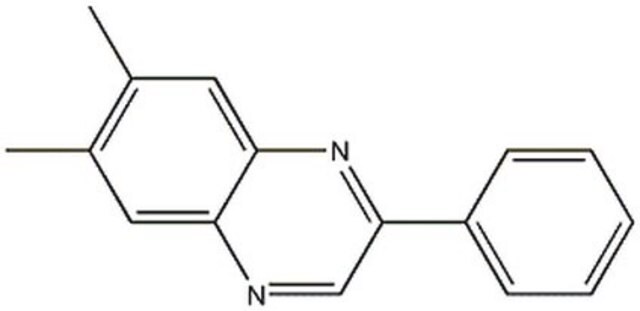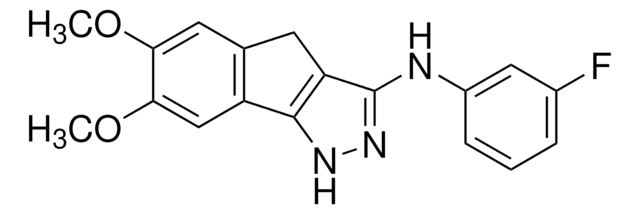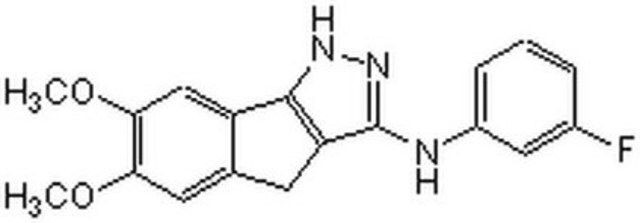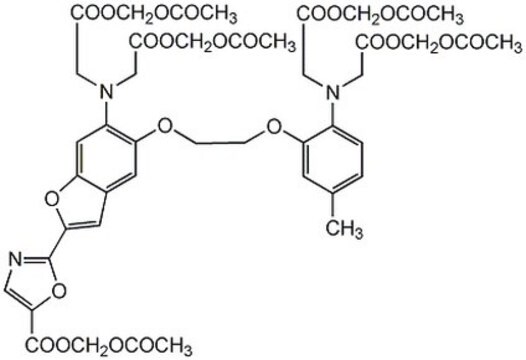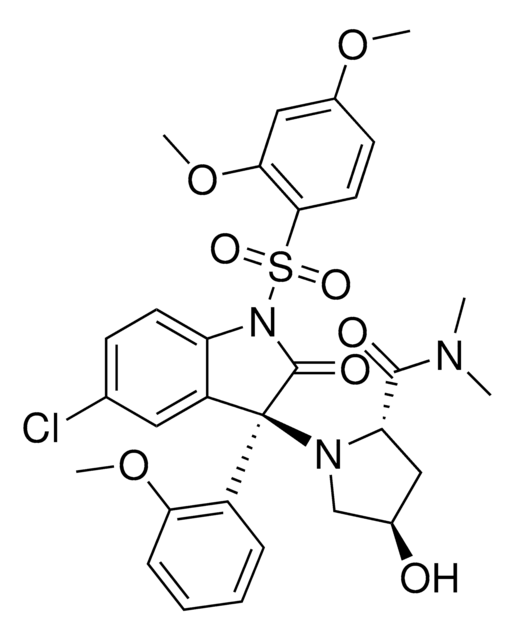521234
PDGFR Tyrosine Kinase Inhibitor V
The PDGFR Tyrosine Kinase Inhibitor V, also referenced under CAS 347155-76-4, controls the biological activity of PDGFR Tyrosine Kinase. This small molecule/inhibitor is primarily used for Phosphorylation & Dephosphorylation applications.
Synonim(y):
PDGFR Tyrosine Kinase Inhibitor V, N-(4-((6,7-Dimethoxy-4-quinoyl)oxy)phenyl)-Nʹ-(2-methylbenzoyl)thiourea, Ki11502
About This Item
Polecane produkty
Poziom jakości
Próba
≥95% (HPLC)
Formularz
solid
producent / nazwa handlowa
Calbiochem®
warunki przechowywania
OK to freeze
protect from light
kolor
off-white
rozpuszczalność
DMSO: 25 mg/mL
Warunki transportu
ambient
temp. przechowywania
2-8°C
ciąg SMILES
S=C(Nc2ccc(cc2)Oc3c4c(ncc3)cc(c(c4)OC)OC)NC(=O)c1c(cccc1)C
InChI
1S/C26H23N3O4S/c1-16-6-4-5-7-19(16)25(30)29-26(34)28-17-8-10-18(11-9-17)33-22-12-13-27-21-15-24(32-3)23(31-2)14-20(21)22/h4-15H,1-3H3,(H2,28,29,30,34)
Klucz InChI
ZXGIBSBJQLLUEE-UHFFFAOYSA-N
Opis ogólny
Działania biochem./fizjol.
PDGFR
Opakowanie
Ostrzeżenie
Rekonstytucja
Inne uwagi
Nishioka, C., et al. 2008. Blood111, 5086.
Furuta, T., et al. 2006. J. Med. Chem.49, 2186.
Informacje prawne
Kod klasy składowania
11 - Combustible Solids
Klasa zagrożenia wodnego (WGK)
WGK 3
Temperatura zapłonu (°F)
Not applicable
Temperatura zapłonu (°C)
Not applicable
Certyfikaty analizy (CoA)
Poszukaj Certyfikaty analizy (CoA), wpisując numer partii/serii produktów. Numery serii i partii można znaleźć na etykiecie produktu po słowach „seria” lub „partia”.
Masz już ten produkt?
Dokumenty związane z niedawno zakupionymi produktami zostały zamieszczone w Bibliotece dokumentów.
Nasz zespół naukowców ma doświadczenie we wszystkich obszarach badań, w tym w naukach przyrodniczych, materiałoznawstwie, syntezie chemicznej, chromatografii, analityce i wielu innych dziedzinach.
Skontaktuj się z zespołem ds. pomocy technicznej